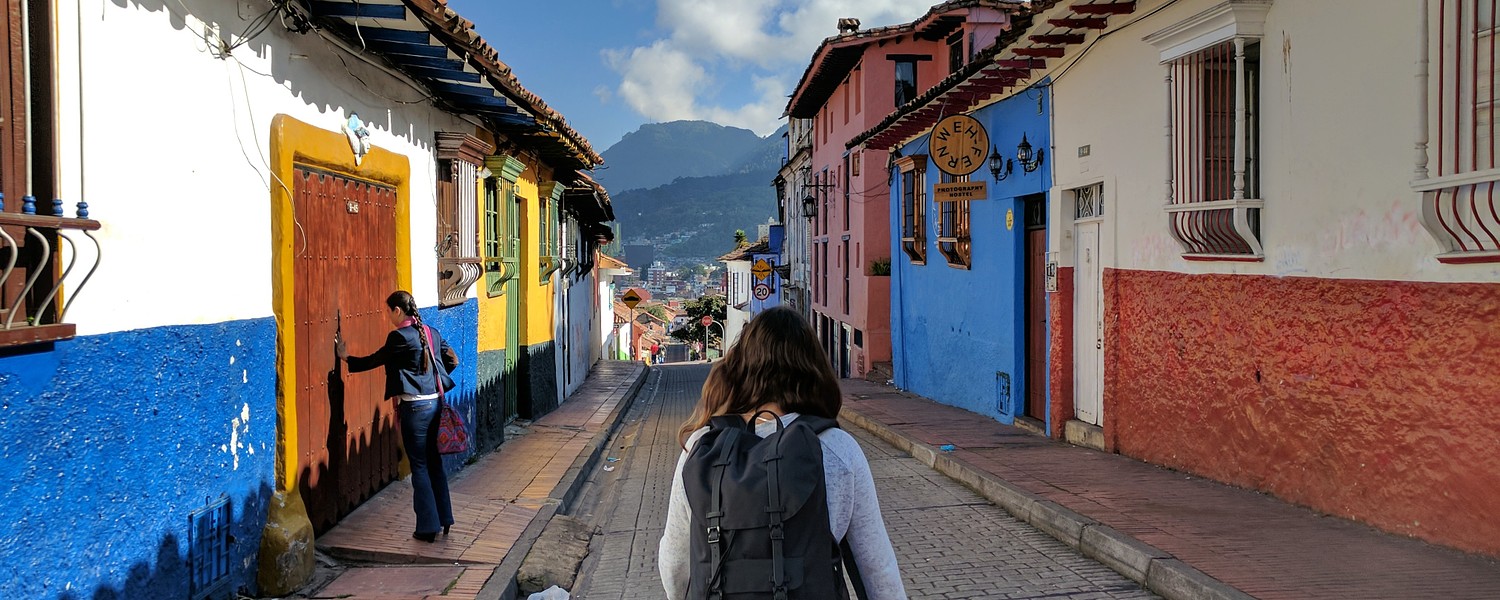
Provided by:
Michael Baron/unsplash.com

Our travel guides are free to read and explore online. If you want to get your own copy, the full travel guide for this destination is available to you offline* to bring along anywhere or print for your trip.
*this will be downloaded as a PDF.Price
€4,95
The City
The guide was updated:
Bogotá is the capital of and largest city in Colombia. With 8 million inhabitants, it is a melting pot for people from all around the country, as well as the city with the most economic opportunities. The streets are always busy and lively, especially on weekends when entire families head to the city centre for a lunch and stroll.
The city was founded as Santa Fe de Bogotá in 1538 by Gonzalo Jiménez de Quesada, a Spanish military leader who conquered the area's Muisca and Chibcha Indians. Protected from winds by the mountains of Monserrate and Guadalupe, the town flourished and took advantage of the plentiful water, wood and planting land. Urban design consisted of squares of one hundred meters, which gives the historical centre its present street grid. As a rule, the east–west streets were called carreras and the north-south ones are called calles.
Despite its size, Bogota city centre is easily walkable and most of the top attractions are accessible on foot. As a visitor, you are most likely to spend a lot of time in La Candelaria, where the most visited tourist attractions are located. A short Uber or bus ride away you’ll find the wealthier neighbourhood of Chapinero. Many hotels, restaurant and nightlife hotspots are found in this general direction.
While Bogotá is a densely populated city with occasionally hellish traffic, it is incredibly green thanks to all the moisture captured by the Andean peaks along the eastern side of the urban blocks.
Thanks to this fusion of the past and present, Bogotá is an ideal location with history, entertainment, delicious cuisine, culture, business, and much more.
The city was founded as Santa Fe de Bogotá in 1538 by Gonzalo Jiménez de Quesada, a Spanish military leader who conquered the area's Muisca and Chibcha Indians. Protected from winds by the mountains of Monserrate and Guadalupe, the town flourished and took advantage of the plentiful water, wood and planting land. Urban design consisted of squares of one hundred meters, which gives the historical centre its present street grid. As a rule, the east–west streets were called carreras and the north-south ones are called calles.
Despite its size, Bogota city centre is easily walkable and most of the top attractions are accessible on foot. As a visitor, you are most likely to spend a lot of time in La Candelaria, where the most visited tourist attractions are located. A short Uber or bus ride away you’ll find the wealthier neighbourhood of Chapinero. Many hotels, restaurant and nightlife hotspots are found in this general direction.
While Bogotá is a densely populated city with occasionally hellish traffic, it is incredibly green thanks to all the moisture captured by the Andean peaks along the eastern side of the urban blocks.
Thanks to this fusion of the past and present, Bogotá is an ideal location with history, entertainment, delicious cuisine, culture, business, and much more.


